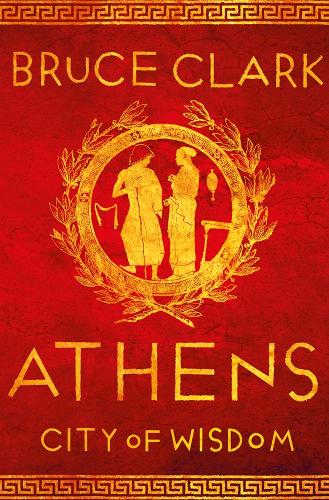20 November 2021, The Tablet
Just over 400 years have passed since Sir Henry Wotton, travelling through Europe on official business, offered a definition of his role: “An ambassador is an honest gentleman sent to lie abroad for the good of his country.”
Even if the preceding words are too harsh, the final six remain important. In everything they do or say, diplomats must serve their homeland, not their personal agenda. A recruit to the Foreign Office is warned of a code which forbids any use of an official position “to further your private interests or those of others.” Equally taboo is accepting “gifts or hospitality” which “might reasonably be seen to compromise your personal judgement or integrity.”
The past, you may say, is a foreign country, where things were done differently. But how differently? When Thomas Bruce, the seventh Earl of Elgin, was appointed ambassador to the Ottoman Sultan in 1799, it was an opportunity not just to consolidate an alliance against the French but to acquire some of the greatest artefacts ever fashioned – in order to decorate his house in Scotland.
He would later give different accounts of his motivation: at times he insisted that he was acting nobly to further British aesthetics. He would claim, quite implausibly, that he only decided to remove sculptures, as opposed to having them drawn, when he saw they were in acute danger. In more private communications, he was more frank. During the summer of 1801, when an exceptional military alliance seemed to offer exceptional personal opportunities, there is no mistaking the excited tone in which he writes to Giovanni Lusieri, his monument-stripper in chief: “The plans for my house in Scotland should be known to you. The building is a subject that occupies me greatly, and offers me the means of placing in a useful, distinguished and agreeable way, the various things that you may perhaps be able to procure for me.”
Studying the documentary evidence for the extraction of the Parthenon sculptures, which began in 1801 and continued intensively over two years, it is hard to avoid a sense of how shocking the operation was to many contemporaries. Was permission given? The original firman (an Ottoman letter of permission) has never been found but let us assume the authenticity of the Italian copy. The person induced to issue it was not the Sultan (who may never have known) but an official several notches down, the deputy to the Grand Vizier; and it has never been clear what exactly he meant by allowing the removal of “some pieces of stone with old inscriptions and figures” from the Acropolis. As the historian William St Clair concluded after a rigorous examination, Elgin’s agents used “cajolery, threats and bribes” to persuade Ottoman officials in Athens to exceed, at least in spirit, the firman’s terms.
When Lusieri and his team went to work with ropes, pulleys and saws, the spectacle was horrifying to British and Ottoman observers alike. As Edward Daniel Clarke, a traveller and antiquarian, describes the scene; “Down came the fine masses of Pentelican marble, scattering their white fragments with thundering noise among the ruins. The disdar (commander of the Ottoman garrison) took his pipe from his mouth and letting fall a tear, said in a most emphatic tone of voice, telos !
It was a scandalous act even with due consideration for the spirit of the times, which was itself pretty horrifying to modern sensibilities. The spirit might be described by the elusive New Testament Greek word harpagmos which refers to the act of grabbing, the thing grabbed or to a grabbing kind of mindset. For the powerful nations of western Europe and their wealthy representatives, Hellenism and its physical legacy was something to be grabbed: either by measuring, drawing and painting the ancient artefacts or, ultimately, by removing them.
Pause for a moment and consider what message is being sent to the world by the British establishment when it retrospectively endorses Elgin’s actions as procedurally correct and legal. Such formalistic arguments cut less and less ice in world where the tide of anger over Europe’s historic arrogance is growing. It surfaced most recently in September when a UNESCO committee, a rotating group of 21 countries, called with unprecedented firmness for the return of the Parthenon marbles to Athens. This emboldened Kyriakos Mitsotakis, the Greek prime minister, to make a formal request for talks on [reunification] during a visit to Britain this week.
The trustees of the British Museum insist, accurately enough, that they have no mandate to do anything except act in the interest of the institution and its educational mission. The British government hides behind the independence of the museum; it is not for any cabinet minister to interfere in the decision-making of such a robustly independent body. As a museum spokesperson said in response to the UNESCO vote, the trustees “have a legal and moral responsibility to preserve and maintain all the collections in their care and to make them accessible to world audiences.” But that need not be the final answer. Ways can be found to overcome the legal obstacles. A law was passed in 2009 to enable the Museum to return objects that had been looted by the Nazis. An equally powerful imperative is building up for the return of objects that were grabbed in the colonial era with egregious cynicism. These include the Benin heads that were seized in 1897 after British forces looted a royal palace in Nigeria.
In 2019, Germany vowed to work towards the return of imperial loot taken “in ways that are legally or morally unjustifiable today.” All over the world, the moral pressure to rectify (or at least not gloat over) the legacy of colonialism is growing, with the support of rising powers like China and India. sensed and anticipated that trend when he said in 2017 that France’s museums should no longer be holding colonial booty from Africa, starting a process that culminated last year in a law which provided for some restitution.
Suppose Britain’s cultural establishment were to renounce the legacy of Elgin and instead throw itself behind the cause of the reunification of the Parthenon sculptures, perhaps on the understanding that Greece would freely grant or lend to the British people other artefacts of real value. Amidst the euphoric chain-reaction that would be triggered, wonderful new ideas would emerge as to how best to share the legacy of Greece with the world. Among the distinguished cultural and academic figures who advocate such a move, the term “reunification” is carefully chosen. If the sculptures now in London belong anywhere it is with the parts of the frieze that remain in Athens and are now superbly displayed, in Greek light and with the Parthenon in view, in the new Acropolis Museum. For the first time in two centuries, visitors would be invited to admire the great majority of the frieze, with its chariots, horsemen, tray-bearers and water-carriers … and ponder what they mean: the fact is that nobody knows.
In its handout on the marbles, the British Museum rightly notes that the Parthenon has a “complex history”, including phases as a “temple, a church, a mosque and now an archaeological site”. If there is a flaw in the way the Acropolis and its monuments are now presented to the world, it lies in the exclusive emphasis placed on the era of Pericles, leading statesman of Athens from 461 to 429 BC – perhaps the greatest of the Rock’s many ages, but not the only one. Eight centuries before Pericles, the citadel hosted a thriving Mycenean palace; two centuries before, the rock’s sanctity, whose violation incurred a terrible, inter-generational curse, became a wild card in Athenian power struggles. And the Parthenon was a temple of monotheism for longer than it served the Olympian religion: a Greek Christian cathedral for perhaps seven centuries, a Roman Catholic one for another two, then a mosque. For Christians, the mysterious light that emanated from the white pillars became an attraction for pilgrims and a sign of the Virgin Mary. In 1394 the Florentine duke Nerio Acciaiuoli bequeathed the entire modest town of Athens to the Catholic cathedral of Santa Maria, in other words the Parthenon.
It is an Ottoman Muslim traveller, Evliya Celebi, who gave one of the greatest descriptions of the Parthenon frieze: “The human mind cannot indeed comprehend those images – they are white magic, beyond human capacity: whoever looks upon them falls into ecstasy, his body grows weak and his eyes water for delight.” And the Acropolis has seen an extraordinary modern history – for example in 1941 when two brave young Athenians scrambled up a vertical tunnel first used by Myceneans in the middle of the night and tore down the Nazi banner that flew menacingly over the city. As described later by Manolis Glezos, emerging from the dark passage onto the moon-lit rock was a moment of spiritual ecstasy as well as political defiance.
All these moments have their place in the story of the Acropolis. It is a shame that the average guide book devotes, say 50 pages to the Periclean century and at most a paragraph to the monotheistic millennium. But if the injuries left by Elgin’s depredation could only heal, then the masters of the Acropolis would more easily find the freedom and confidence to present the story of the Sacred Rock in its mysterious entirety. And the whole world would joyfully assist them.
Bruce Clark’s article was published in The Tablet (Saturday 20 November 2021).

Bruce Clark writes for The Economist on history, culture and ideas. His latest book 'Athens: City of Wisdom', is published by Head of Zeus and is available to purchase via The Tablet also.
